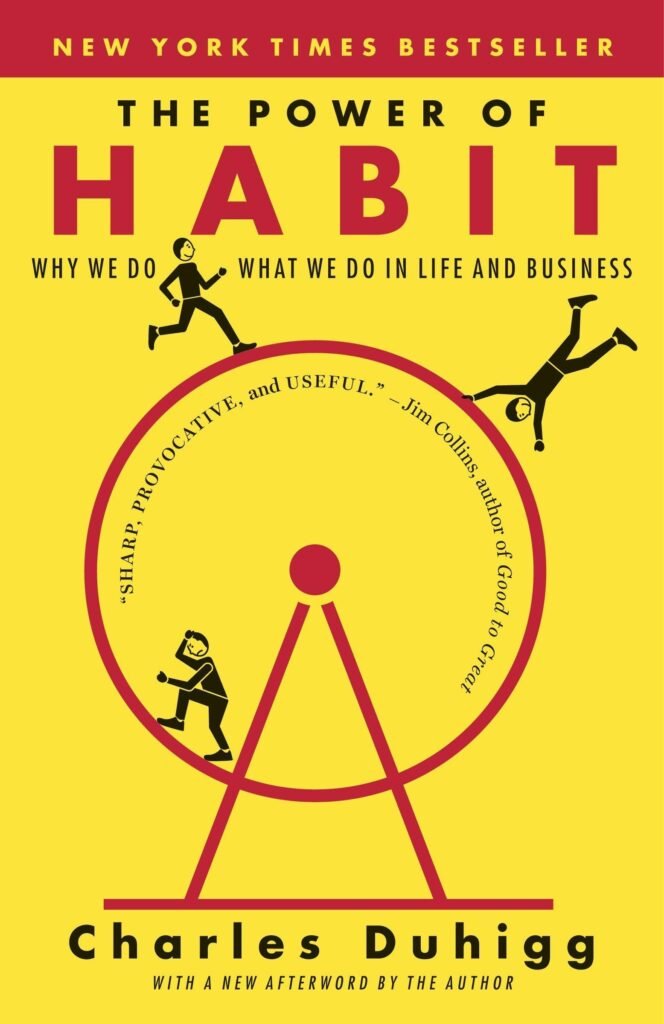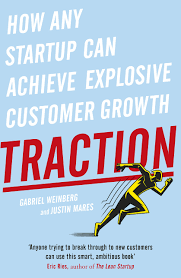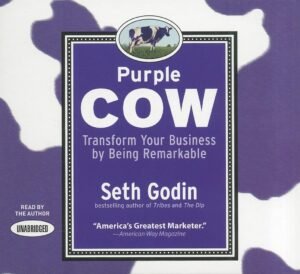Why Habits Rule Our Lives
“First you make your habits, then your habits make you.”
Think about it: How often do you grab your phone in the morning before brushing your teeth? Or eat lunch at the same time without even thinking about hunger? Nearly 40% of what we do every day isn’t conscious choice — it’s habit.
Charles Duhigg’s The Power of Habit takes us on a journey through neuroscience, psychology, and inspiring real-life examples to reveal one powerful truth: if you can change your habits, you can change your life.
This book matters because whether you’re chasing financial freedom, business success, health goals, or simply more control in life, everything boils down to the habits you build.
1. Habits of Individuals: The Habit Loop
Duhigg introduces the Habit Loop — the scientific formula behind every habit:
Cue → Routine → Reward
-
Cue (Trigger): A signal that tells your brain to start the habit. (e.g., stress, time of day, location).
-
Routine: The actual action (e.g., smoking, snacking, working out).
-
Reward: The feeling your brain craves (relief, pleasure, energy).
👉 Real-Life Example:
Take Anjali, a young professional from Delhi. Every afternoon at 4 pm, she craved a cookie. After reading Duhigg’s book, she realized the cue wasn’t hunger but boredom. Instead of eating, she replaced the routine with a quick 5-minute chat with a colleague. The reward—a break from work and a feeling of connection—remained the same. Over time, her cookie habit disappeared, replaced by a healthier routine.
💡 Takeaway: You cannot eliminate bad habits, but you can replace the routine while keeping the cue and reward.
2. Keystone Habits: Small Wins that Spark Big Changes
Not all habits are equal. Keystone habits are those that spark a chain reaction and positively influence other areas of life.
For example:
-
Exercising regularly → leads to better eating → improved sleep → higher productivity at work.
-
Writing a daily journal → improves focus → reduces stress → builds long-term clarity.
👉 Real-Life Example:
Michael Phelps, the Olympic swimmer, built his career around keystone habits. His bedtime and pre-race routines were so automatic that when unexpected challenges hit (like swimming with water-filled goggles during the Beijing Olympics), his habits carried him through — and he still won gold.
💡 Practical Tip: Don’t try to change everything at once. Identify one keystone habit (like exercise, budgeting, or meditation) and focus on mastering it.
3. Willpower: The Most Powerful Habit of All
Duhigg argues that willpower is the single most important keystone habit for success. Studies show that people with strong willpower achieve more in career, health, and relationships.
But here’s the twist: willpower isn’t something you’re born with — it’s like a muscle you can train.
How to Build Willpower:
-
Start small — practice discipline in one area (e.g., making your bed daily).
-
Plan ahead for temptation (e.g., bring fruit to work instead of relying on vending machines).
-
Build belief — surround yourself with supportive communities.
👉 Real-Life Example:
Starbucks trains its employees to use willpower under stress by teaching them routines to handle angry customers. Instead of reacting emotionally, they follow pre-planned scripts. This habit reduces stress, improves customer service, and boosts sales.
💡 Takeaway: Willpower grows stronger the more you practice it — just like lifting weights.
4. Organizational Habits: How Companies Succeed or Fail
Habits don’t just shape individuals; they define entire organizations. Companies thrive when they build the right routines into their culture.
Example from the book: Alcoa’s Transformation.
When Paul O’Neill became CEO, instead of focusing on profits, he obsessed over one keystone habit: worker safety. By making safety the priority, employees developed habits of communication, discipline, and accountability. Within years, Alcoa’s profits soared.
👉 Lesson for Entrepreneurs: Focus on keystone habits within your business (like customer service, team communication, or quality control) and watch everything else improve.
5. Societal Habits: Movements and Social Change
Duhigg explains how habits don’t just change individuals or organizations but also societies.
For example: The U.S. Civil Rights Movement gained momentum because of habitual gatherings, peer pressure, and collective routines. Rosa Parks wasn’t the first to refuse her bus seat, but because she was deeply embedded in a network of habits (church groups, communities), her action sparked a widespread movement.
💡 Lesson: Social habits create revolutions. If you want to spark change, connect to people’s existing habits and networks.
6. The Golden Rule of Habit Change
Charles Duhigg’s golden rule:
👉 You cannot erase bad habits. You can only change them.
This means:
-
Identify the cue
-
Replace the routine
-
Keep the reward
Example: Smokers don’t just crave nicotine—they crave relaxation or stress relief. Replacing smoking with meditation, deep breathing, or even chewing gum works when the reward (relaxation) remains intact.
7. Action Plan: How to Build New Habits in Your Life
Here’s a step-by-step guide inspired by The Power of Habit:
-
Identify Your Routine: Write down the habit you want to change.
-
Experiment with Rewards: Try different rewards to see what craving drives your habit.
-
Isolate the Cue: Track what triggers your habit (time, location, emotion, people, or prior action).
-
Have a Plan: Create a clear plan to replace the routine with a new one when the cue strikes.
💡 Example: If you check your phone every 5 minutes while working, identify the cue (boredom or stress). Replace the routine (scrolling Instagram) with stretching or drinking water. Reward yourself with a 5-minute social break later.
Lessons Learned
-
Habits shape nearly half our daily life.
-
Keystone habits create ripple effects across all areas.
-
Willpower is the foundation of success.
-
Organizations succeed by focusing on the right cultural habits.
-
Societal movements thrive on collective routines.
-
Habits cannot be deleted but can be transformed.
Final Reflection
The Power of Habit reminds us that success isn’t built overnight—it’s the result of tiny routines repeated daily. Whether you want to lose weight, build wealth, grow your career, or lead a movement, your habits will either carry you forward or hold you back.
As Duhigg says: Change might not be fast and it isn’t always easy. But with time and effort, almost any habit can be reshaped.
Call to Action
“Inspired by the lessons from The Power of Habit by Charles Duhigg? This is just one story in our Book to Life series. Pick up the book today, identify your keystone habits, and take the first step toward transforming your life.”
🌐 Visit: MYCASHFLOW – www.mycashflowhub.com
📞 Call: 885051169
Disclaimer
This story is hypothetical, created only to demonstrate how to apply concepts from The Power of Habit in real life through storytelling form.




